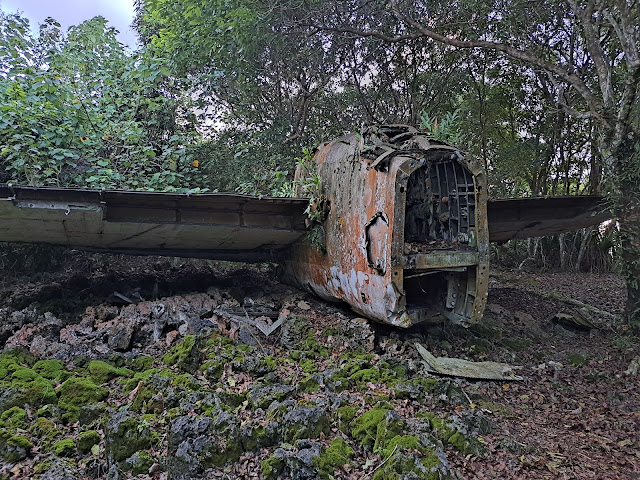 |
| Guam is a U.S. territory in Micronesia. Tumon Bay is where most of the resorts on the island are located. |
 |
| The Guam Museum was recently remodeled. It tells the story of the Chamorro people, the natives of Guam. |
 |
| A model of a Chamorro Sakman outrigger canoe. Chamorros came to Guam over 3,500 years ago. |
 |
| Initial settlers may have found Guam by following birds. |
 |
| A traditional Latte structure |
 |
| The native language of Guam has roots in Southeast Asia and is not closely related to Polynesian. |
 |
| Glass fishing floats from Japan from the 1900s |
 |
| Large portions of Guam are U.S. military bases and training areas. |
 |
| Guam was occupied by the Japanese during World War II and was subject to extremely harsh conditions, solidifying Guam's positive relationship with the U.S. after liberation. |
 |
| An artistic depiction of latte stones |
 |
| An artistic rendition of an old Chamorro village |
 |
| Latte stones and wild chickens at a park in the capital of Guam, Hagatna |
 |
| Latte stones were building supports for ancient Chamorro buildings. |
 |
| A nuclear shelter. Guam is an extremely strategic island for the U.S. Navy and Air Force. |
 |
| A cute park in downtown Hagatna. |
 |
| Ferdinand Magellan was the first European to travel to Guam in 1521. Guam became a formal Spanish colony in 1565. |
 |
| The Spanish built its first settlement on Guam in 1668. |
 |
| Guam was a key re-supply point for the Spanish Manila treasure fleet between the Philippines and Acapulco. |
 |
| The native Chamorro rose up against the Spanish but disease and failed rebellion reduced their population to 1/10th pre-Spanish numbers. |
 |
| The United States acquired Guam from Spain after the Spanish-American War in 1898. |
 |
| Fort Nuestra Senora de la Soledad was a Spanish fort on the southern portion of the island. |
 |
| The bay Magellan landed in is to the north of it, Umatac Bay. |
 |
| Magellan called Guam the island of thieves because the natives tried to take everything they could from Magellan and his crew. |
 |
| Dogs feast on the remnants of a coconut milk salesman's refuse. |
 |
| Japan occupied Guam at the same time as the attack on Pearl Harbor. |
 |
| Guam was occupied by the Japanese for almost three years before being liberated by U.S. Marines. |
 |
| A Japanese two-man submarine, one of its more ineffective weapons during World War II. |
 |
| Asan Beach, one of the American amphibious landing points. |
 |
| A WWII memorial at Asan Beach |
 |
| The Japanese positioned the Piti guns on a hill to protect Asan Beach. |
 |
| It is a short but steep hike up to their position from a church near Asan Beach. |
 |
| Guam Community College is located on the eastern side of the island in Mangilao. |
 |
| Gadao's Cave is located in on the south eastern side of the island. |
 |
| Nobody is sure how old the Chamorro pictographs are inside. |
 |
| Gadao was a legendary chief of a village in Inarajan, located next to the cave. |
 |
| Fossils located in the side of the walkway to the cave |
 |
| Free-roaming roosters are everywhere! |
 |
| You can ride a Carabao at the Chamorro Night Market. |
 |
| The Chamorro Night Market is the most happening place on Guam. |
 |
| Calamansi is a citrus plant common on the Philippines. |
 |
| Christmas meets traditional Chamorro dance |
 |
| Hagatna at night |
 |
| Tropical drinks! |
 |
| Some traditional food from Guam at Jeff's Pirates Cove, including red rice, fina'denne,' and kelaguen. |
 |
| Gotta eat fish on an island. |
 |
| Latte stones are kind of a big deal. |
 |
| A B-52 destroyed in a typhoon in 1976 |
 |
| A pristine beach at one of Guam's military bases |